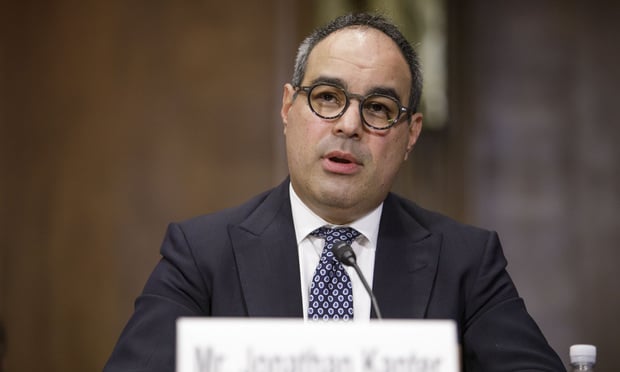 California'spenalty mirrors the federal one that was nullified. In many cases,it will amount to $695 for a single adult and about $2,000 for afamily of four. (Photo: Shutterstock)
California'spenalty mirrors the federal one that was nullified. In many cases,it will amount to $695 for a single adult and about $2,000 for afamily of four. (Photo: Shutterstock)
Hundreds of thousands of new enrollees signed up for 2020coverage through Covered California, driven by new carrot-and-stick state policies that providefinancial aid to help some people afford their premiums whilepenalizing those who don't have coverage, state health officialsannounced Tuesday.
|Covered California Executive Director Peter Lee said the healthinsurance exchange is giving consumers who remain uninsured anotherchance to enroll: Effective immediately, those who were not awareof the new penalty or financial aid can sign up for coverage duringa special enrollment period that will last through April.
|Related: Watch out for California's new laws affectingemployer health coverage
|Covered California is the state's Affordable Care Act healthinsurance marketplace, where eligible individuals, families andsmall businesses can purchase plans and may qualify for federal taxcredits and/or the new state-based subsidies based on theirincomes.
|"This has proven the case that the Affordable Care Act, asdesigned and not kneecapped, works and works well," Lee said.
|The new state penalty encouraged people to check the insuranceexchange, he said. The subsidies encouraged people to buy.
|About 418,000 Californians newly enrolled in individual orfamily plans through Covered California by the Jan. 31 enrollmentdeadline, 41 percent more than last year and the highestnew enrollment since 2016, according to preliminary data from theexchange.
|About 1.1 million existing Covered California enrollees renewedplans, bringing the total number of enrollees to more than 1.5million.
|While California officials invest in the exchange and expandopportunities for state residents to enroll in coverage, the Trumpadministration has taken the opposite approach with the federallyrun exchange, healthcare.gov: it has cut funding for marketing andoutreach, eliminated the federal penalty for not having insuranceand shortened the open enrollment window.
|This year, about 8.3 million people enrolled in new plans orrenewed their coverage via the federal exchange, down slightly from8.4 million in 2019.
|California is one of six states and the District of Columbia that require most oftheir residents to purchase health insurance or face a penalty.Congress eliminated the Affordable Care Act's federal tax penalty,effective last year.
|California's penalty mirrors the federal one that wasnullified. In many cases, it will amount to $695 for a single adultand about $2,000 for a family of four. But for a lot of people, thefinancial hit could be substantially larger.
|The state projects the penalty could raise $317 million inthe first year, which is intended to partially fund the subsidies.Lee said he would forgo the extra revenue if it meant people weregetting covered.
|"The penalty is on the books but nobody wants the money," hesaid. "We want it to be an economic nudge to get people to getcovered."
|People who were motivated by the penalty to shop for insurancemight have found their out-of-pocket premium costs lower than lastyear.
|Some of the new state financial aid is available to low-incomecustomers, but California became the first state to offer subsidiesto middle-income people: Those whose incomes are between400 percent and 600 percent of the federalpoverty level, or about $51,000 to $76,000 a year for an individualand $104,800 to $157,200 for a family of four. Those thresholds aretoo high to qualify for federal aid but low enough to make healthinsurance a financial burden.
|The average state assistance for this group is about $500 amonth, Lee said.
|About 625,000 people qualified for the new state subsidies,including 32,000 middle-income enrollees, Lee said.
|The subsidies vary by income, household size, location and age.Some went to low-income residents who also qualify for federal taxcredits.
|Evette Tsang, an insurance broker in Sacramento who servesmostly Chinese-speaking immigrants, said her clients used theirstate subsidies this year to purchase more comprehensivesilver-tier plans with higher premiums rather than the cheaperbronze plans with lower benefits.
|"After these few years, they start to see the importance ofhealth insurance," Tsang said. "Before, they only wanted bronze,but now they're going to silver."
|Deborah Kelch, executive director of the Insure the UninsuredProject, said a lot of the success of this year's enrollmentnumbers was the product of an aggressive marketing campaign urgingCalifornians who hadn't been able to afford insurance in the pastto take a second look.
|"At this stage, Covered California has a really good formulathey're using," Kelch said. "There are TV ads, they have their bustour, they work with community organizations."
|Covered California budgeted $47 million for advertising thisyear, including $6 million for the special enrollment period, Leesaid. By comparison, the federal government budgeted $10 million on advertising for healthcare.gov, whichserves 38 states.
|Despite the advertising dollars, Lee said, there still isn'tenough awareness about the penalty and subsidies, which explainsthe special enrollment period through April 30.
|Insurance broker Tsang said that while she wants everyone to getcovered, she isn't looking forward to the new enrollment period andthe extra work it will bring. Nearly all her clients knew about thepenalty, she said, and it was the No. 1 reason they signed up.
|California already has a longer enrollment window than thefederal government's healthcare.gov exchange, which lasts only sixweeks.
|Combined with other factors, the extended period encourageshigher enrollment and a better mix of healthy and sick people inthe insurance pool, said Laurel Lucia, director of the Health CareProgram at the Center for Labor Research and Education at theUniversity of California-Berkeley.
|"With the state mandate and the new state subsidies, we projectthe uninsured rate will remain flat over the next few years," Luciasaid.
|That's the important comparison, according to Lee. While newenrollment in the federal exchange has dropped by48 percent since 2016, new enrollment in CoveredCalifornia has been relatively stable since then, dropping by 2percent.
|This KHN story first publishedon California Healthline, aservice of the California HealthCare Foundation.
|Kaiser HealthNews (KHN) is a national health policy news service. It is aneditorially independent program of the Henry J. Kaiser Family Foundation whichis not affiliated with Kaiser Permanente.
|Readmore:
Complete your profile to continue reading and get FREE access to BenefitsPRO, part of your ALM digital membership.
Your access to unlimited BenefitsPRO content isn’t changing.
Once you are an ALM digital member, you’ll receive:
- Critical BenefitsPRO information including cutting edge post-reform success strategies, access to educational webcasts and videos, resources from industry leaders, and informative Newsletters.
- Exclusive discounts on ALM, BenefitsPRO magazine and BenefitsPRO.com events
- Access to other award-winning ALM websites including ThinkAdvisor.com and Law.com
Already have an account? Sign In
© 2024 ALM Global, LLC, All Rights Reserved. Request academic re-use from www.copyright.com. All other uses, submit a request to [email protected]. For more information visit Asset & Logo Licensing.








